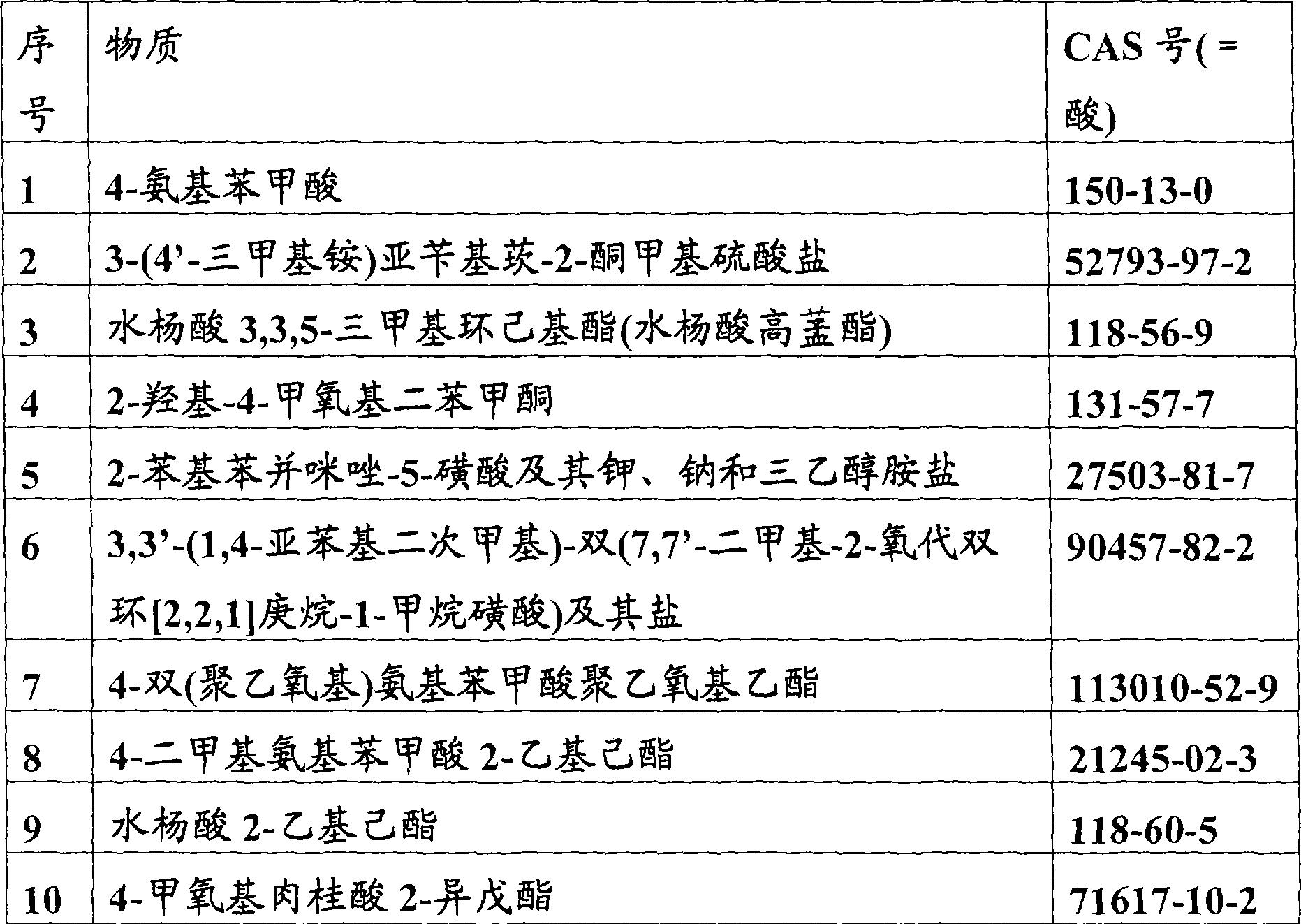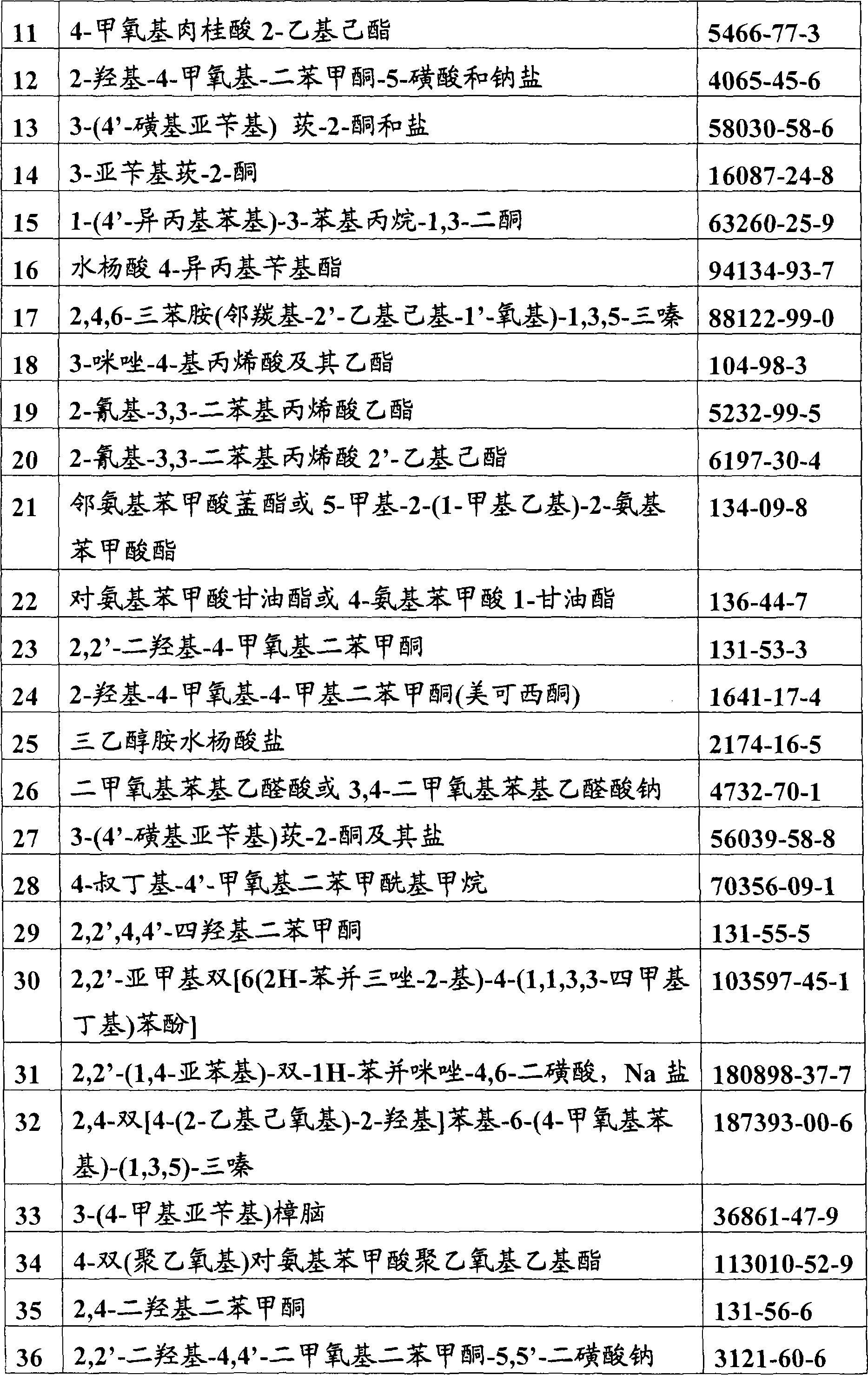Cosmetic formulations comprising zno nanoparticles
A cosmetic and particle technology, applied in the field of nanoparticulate zinc oxide and charged organic components such as acrylate-based polymers, zinc oxide and titanium dioxide nanoparticles, can solve the problem of not preventing ion migration or affecting the performance of interface materials issues of ultimate control
- Summary
- Abstract
- Description
- Claims
- Application Information
AI Technical Summary
Problems solved by technology
Method used
Image
Examples
Embodiment 1
[0094] Example 1 General Batch Process for Surface Treatment of Zinc Oxide and / or Titanium Dioxide Particles
[0095] The method involves introducing zinc oxide and / or titanium dioxide particles comprising a plurality of nanoparticles into a surface treatment vessel capable of mixing and heating its contents under controlled circumstances. Examples of suitable surface preparation vessels include Buchi Rotovap (small, available from Brinkmann Instruments), V-blender (industrial scale, available from Patterson-Kelley), ribbon mixer (industrial scale, available from Jaygo), rotary oven (industrial Scale, available from Thermal Processing Solutions), and fluidized bed (industrial scale, available from Littleford Day).
[0096]a) The particles are introduced into the surface treatment vessel by methods known to those skilled in the art. Oxygen is removed from the vessel, typically by vacuum followed by flushing with an inert gas, followed by incorporation of the bulk nanoparticles...
Embodiment 2
[0104] The batch method of embodiment 2 surface treatment zinc oxide
[0105] The following is a description of a method for preparing surface-treated zinc oxide particles. Surface-treated zinc oxide is an active physical sunscreen ingredient for cosmetic formulations.
[0106] The product was prepared by the batch process detailed in Example 1.
[0107] a) Set the surface area to 14m 2 8 kg of zinc oxide nanoparticles / g were weighed into plastic bags and manually loaded into clean 2-ft 3 V-shaped mixer. Oxygen was removed by evacuating the V-blender to full vacuum level, followed by devacuum of the V-blender with nitrogen. Repeat the vacuum and devacuum cycle twice.
[0108] b) The V-blender was filled with inert gas and rotated at 5 RPM, and the V-blender was continuously flushed with nitrogen to condition the particles by removing adsorbed species.
[0109] c) Uniformly mix diphenyldimethoxysilane (168g) and octyltriethoxysilane (42g) monomers using a paddle mixer to ...
Embodiment 3
[0114] Embodiment 3 specific surface treatment embodiment
[0115] 1) Physical sunscreen ingredients-Si(20,80) / octyltriethoxysilane, diphenyldimethoxysilane; applied to ZnO(23m 2 / g) of 4.3% by weight of the surface treatment layer precursor mixture.
[0116] 2) Physical sunscreen ingredients-Si(20,80) / octyltriethoxysilane, diphenyldimethoxysilane; applied to TiO 2 (50m 2 / g) of about 9.4% by weight of the surface treatment layer precursor mixture.
PUM
| Property | Measurement | Unit |
|---|---|---|
| Average particle size | aaaaa | aaaaa |
| Average particle size | aaaaa | aaaaa |
| Average particle size | aaaaa | aaaaa |
Abstract
Description
Claims
Application Information
 Login to View More
Login to View More - R&D Engineer
- R&D Manager
- IP Professional
- Industry Leading Data Capabilities
- Powerful AI technology
- Patent DNA Extraction
Browse by: Latest US Patents, China's latest patents, Technical Efficacy Thesaurus, Application Domain, Technology Topic, Popular Technical Reports.
© 2024 PatSnap. All rights reserved.Legal|Privacy policy|Modern Slavery Act Transparency Statement|Sitemap|About US| Contact US: help@patsnap.com










